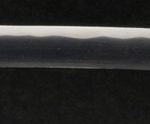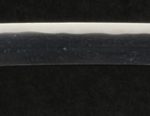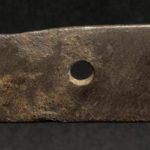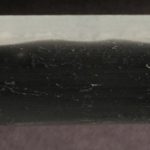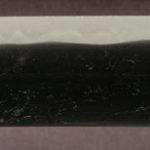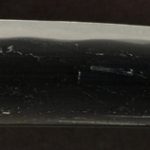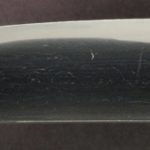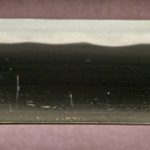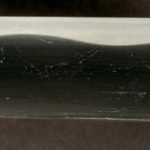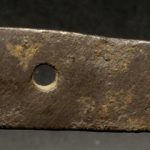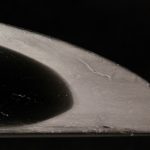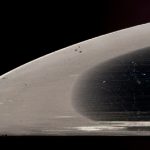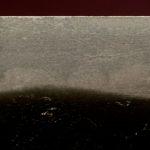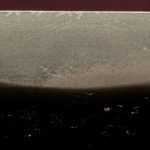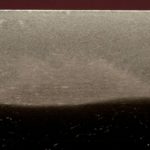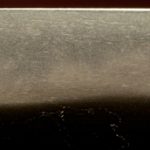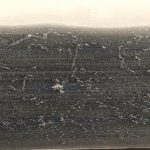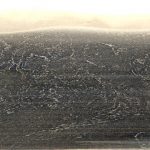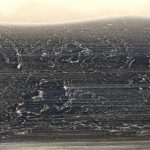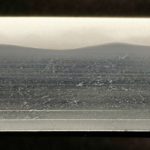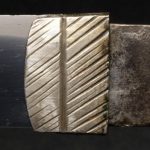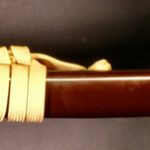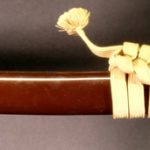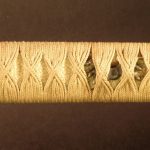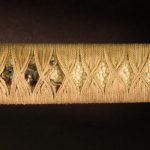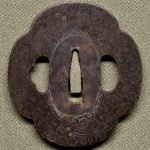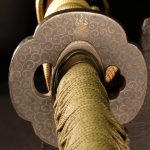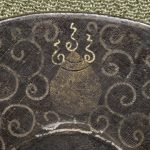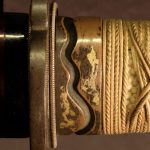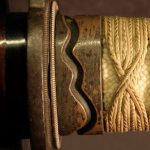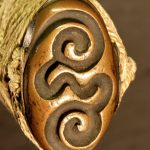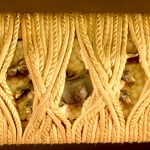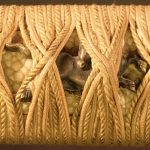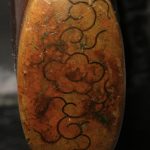HIRA ZUKURI WAKIZASHI in KOSHIRAE
WAKIZASHI MUMEI – HIRA ZUKURI
MEI: NONE
DATE: NONE
NAGASA: 48.577cm (19.125″)
OVERALL: 56.515cm (22.25″)
MIHABA: 3.016cm (1.1875″)
KASANE: 0.63cm (0.25″)
SORI: 1.587cm (0.625″)
NAKAGO: UBU
MEKUGI ANA: ONE
YASURIME: KATTE SAGARI
MUNE: IROI
HADA: ITAME / MASAME
HAMON: MIDARE BASED ON NOTARE
BOSHI: KO-MARU
HORIMONO OMOTE: NONE
HORIMONO URA: NONE
HABAKI: 1 PIECE SILVER
KOSHIRAE
This is a long wakizashi with a nagasa just over 19”. Rare to see Hira-zukuri blades this length. The wakizashi came into its own during the Muromachi period with the standard length being between 39-51cm. The Hira-zukuri wakizashi of this period became longer than the preceding Nambokucho period. Based on the length, hada, hamon and nakago it is my feeling this is a Muromachi period wakizashi.
The nakago is ubu with one mekugi ana. There is some minor deterioration to the nakago, as it was probably subjected to the elements, perhaps on the battlefield during the Sengoku period. If it were mine I would work on boning the red rust from the nakago and applying a light coat of oil to halt any further rust development. However, as the is a controversial topic, I will leave that decision to the new owner. The Hada is a mix of mokume blending with itame. The Hamon is midare based on notare. There is utsuri seen along the mune. The blade is in overall very good condition and polish. There are a few areas of loose grain, common for this period. There are some light hike-kizu or surface scratches. Nothing detrimental or fatal.
The koshirae is very nice. The tsuka has a beautiful string wrap in a tan ito. The fuchi/kashira are suaka done in the guribori style. Menuki are horses. The tsuba is iron with a scrolling pattern with the flaming jewel in nunome. The saya is a dark red. It looks like perhaps red was put over a gold base color, but that is merely my guess. Regardless of how it was done, it is very attractive and is a welcome diversion from the standard black. The kurigata and koiguchi are horn and the kojiri is suaka with a scrolling pattern inlaid with shakudo.
SOLD
